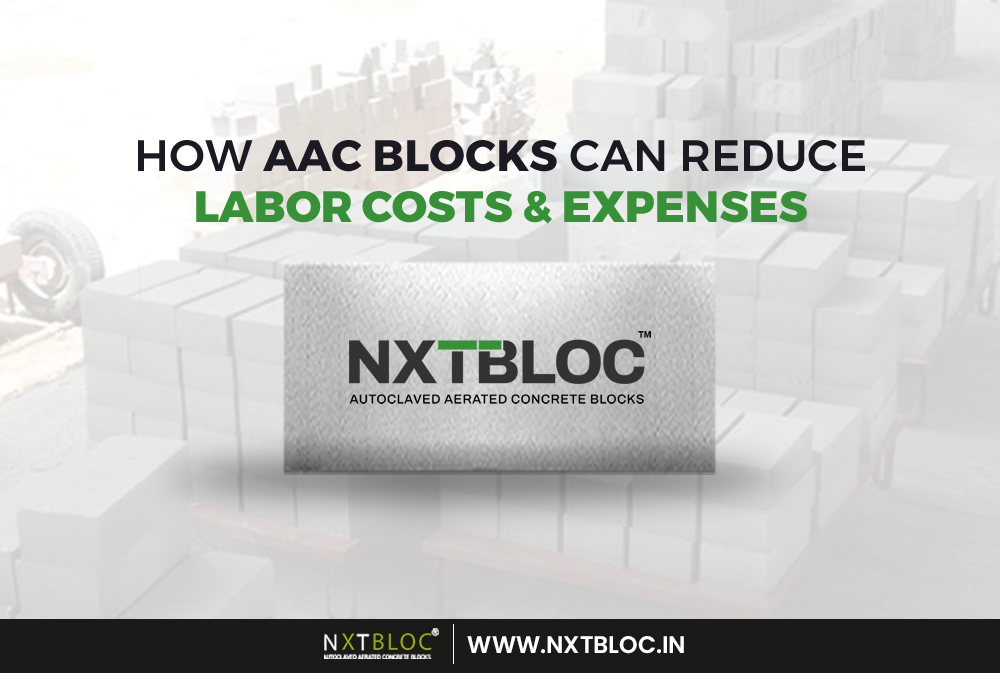The success of a project depends on identifying ways to reduce labour costs in the construction industry. One innovative solution that has gained significant attention is the use of AAC (Autoclaved Aerated Concrete) blocks. These lightweight and versatile building materials not only offer structural benefits but also provide substantial labour cost savings.
In this article, we will explore the characteristics of AAC blocks, their impact on labour requirements, and how they contribute to cost-efficient construction.
Table of Contents

Characteristics of AAC Blocks
AAC blocks possess unique attributes that make them ideal for reducing labour costs in construction projects.
- Lightweight and Easy Handling
AAC blocks are known for their lightweight composition, thanks to a cellular structure that incorporates air voids. This characteristic makes them easy to handle, reducing the physical strain on labourers during transportation and installation. The lightweight nature of AAC blocks allows for faster and more efficient construction processes.
- Speedy Construction Process
Due to their large size, AAC blocks cover a larger area compared to traditional building materials. As a result, fewer blocks are needed, leading to faster construction. The quick installation of AAC blocks translates into reduced labour hours required for project completion. This time efficiency contributes significantly to labour cost savings.
- Minimal Skilled Labor Requirement
AAC blocks simplify the construction process, minimizing the need for highly skilled labourers. The precise proportions and interlocking structure of the blocks make assembling simpler and require less complicated construction skills. This not only saves costs associated with skilled labour but also allows for a more flexible workforce with reduced dependency on specialized workers.

Labour Cost Savings with AAC Blocks
The usage of AAC blocks results in real labour cost savings in construction projects.
- Reduced Manual Labor for Block Handling
The lightweight nature of AAC blocks eliminates the need for heavy machinery or excessive manual labour during block handling. Workers can easily transport and position the blocks, reducing the number of personnel required for these tasks. The reduced reliance on manual labour directly translates into lower labour costs, enabling efficient allocation of resources.
- Time Efficiency and Faster Project Completion
The use of AAC blocks significantly speeds up the construction process. With their large size and interlocking design, AAC blocks can be quickly and precisely installed, saving valuable time. This time efficiency allows for faster project completion, reducing labour hours required for the entire construction phase. The reduction in labour time directly leads to substantial cost savings.
- Streamlined Workflow and Resource Optimization
AAC blocks contribute to a streamlined construction workflow, optimizing resource utilization and reducing labour costs. Their lightweight nature and ease of handling enable efficient material transportation and installation, minimizing delays and maximizing productivity. By streamlining the workflow, project managers can effectively allocate labour resources, reducing the overall labour requirement and associated costs.
Future Implications and Trends
The future of AAC blocks in labour cost optimization looks promising.
- Advancements in AAC Block Technology
The field of AAC block manufacturing continues to evolve, with ongoing advancements in technology. These innovations focus on further reducing the weight of AAC blocks, enhancing their thermal properties, and improving strength characteristics. As technology progresses, the labour cost savings associated with AAC blocks are expected to increase.

- Potential Cost Optimization Strategies
As the construction industry becomes more focused on cost efficiency, AAC block manufacturers and contractors are exploring additional strategies to optimize labour costs. These strategies include streamlining installation techniques, developing efficient construction methodologies, and implementing comprehensive training programs for labourers. By embracing these cost optimization strategies, the industry can maximize the benefits of AAC blocks in reducing labour expenses.
Conclusion
AAC blocks offer a compelling solution for saving labour costs in construction projects. Their lightweight nature, ease of handling, and speedy installation process contribute to significant reductions in manual labour requirements. The time efficiency achieved through AAC block construction further enhances cost savings.
As the construction industry continues to embrace AAC blocks and future advancements unfold, their role in optimizing labour costs will become increasingly vital. By leveraging the characteristics of NXTBLOC’s AAC blocks, project owners and contractors can achieve cost-efficient construction without compromising on quality or structural integrity.
